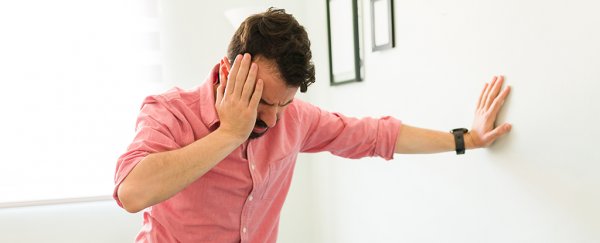Feeling dizzy or light-headed when standing is a common experience caused by a drop in blood pressure. When this blood pressure dip is very brief and rapid, and not tied to any other health problems, it's referred to as initial orthostatic hypotension or IOH.
New research suggests some simple muscle exercises before or after standing could limit the effects of IOH, bringing relief to those who experience it, with no cost and no drugs involved. The key, it seems, is activating the lower body muscles before or after standing.
While researchers tested the muscle-tensing idea before – after people already stood up – with some success, this new study looked at whether it could work as a pre-emptive measure.
 The effects of two exercises on IOH. (Heart Rhythm)
The effects of two exercises on IOH. (Heart Rhythm)
"These are simple, effective, and cost-free interventions that patients can use to prevent their symptoms from IOH," write the researchers in their published paper.
The study involved 22 young women with a history of IOH, and two exercises were tested: repeatedly raising the knees while sitting for 30 seconds before standing and crossing the legs for 30 seconds after standing.
Researchers monitored the participants' heart rate and blood pressure during the experiments, with intervals between each one. Participants were also asked to self-report on the symptoms of IOH, including feelings of dizziness.
Compared with no intervention measures – so simply standing up as normal – both exercises made a significant difference in limiting the temporary drop in blood pressure and relieving the symptoms of IOH.
"Since it is a physical maneuver, it simply requires the lower body limbs, which patients can utilize at any time and from anywhere to combat their symptoms," says clinical researcher Nasia Sheikh from the University of Calgary in Canada.
It's thought that IOH is caused by an opening of the blood vessels, triggered by the process of standing up. What these exercises might be doing, then, is counteracting that response, and the researchers say the two exercises could also be used in tandem.
Right now, those who experience IOH – thought to be up to 40 percent of the general population in the US – don't have any specific treatments available. Up until now, the best advice has been to try to stand up as slowly and as gradually as possible.
Although the sample size in this study was a small one and only involved women, these exercises could potentially change that situation. A little light-headedness might not seem like a huge problem, but it impacts daily life and can, in some cases, lead to fainting and a loss of consciousness.
"Almost everyone has probably experienced some light-headedness at some time after standing up," says Satish Raj, a cardiologist at the University of Calgary. "For some people, this is a frequent occurrence and may happen several times a day, which can be very frightening and negatively impact their quality of life."
The research has been published in Heart Rhythm.
